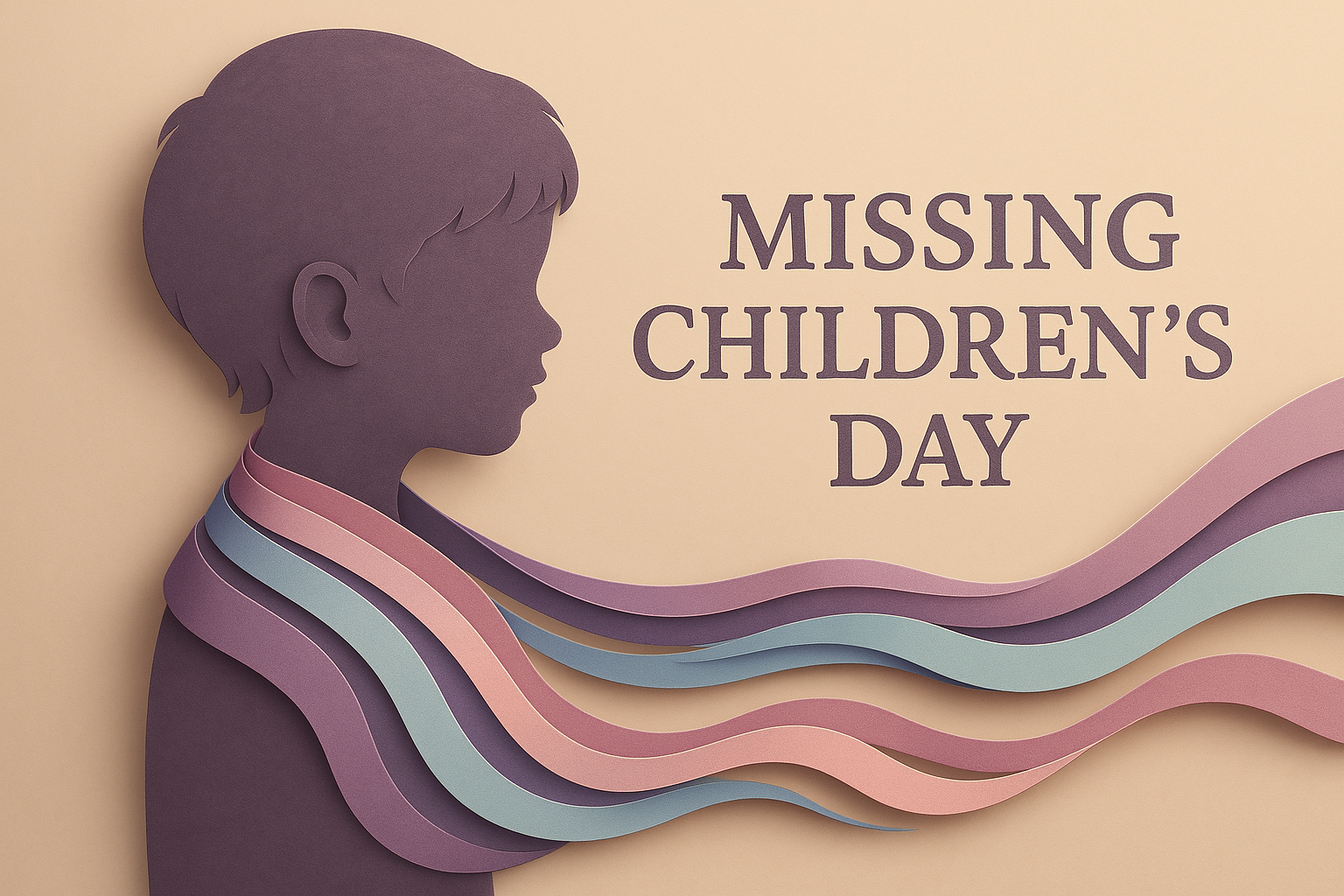What is International Missing Children’s Day?
International Missing Children’s Day is held each year on May 25. It brings attention to the thousands of children who go missing every year around the world. The day honours the efforts of those who search for them and supports families who live with the pain of a missing child.
The day is also meant to raise awareness and improve prevention. It reminds people to stay alert, educate children, and work together to keep them safe. Whether the child is missing due to abduction, trafficking, or running away, the goal is the same: bring them home.
International Missing Children’s Day is observed in many countries, often with public campaigns, memorials, and educational events.
History and Origin
The day began in the United States in 1983, when President Ronald Reagan declared May 25 as National Missing Children’s Day. The date was chosen in memory of Etan Patz, a six-year-old boy who disappeared in New York on May 25, 1979. His case became one of the first to receive national media attention and led to major changes in how missing children cases were handled.
In 2001, the day became international through the efforts of the International Centre for Missing and Exploited Children and Missing Children Europe. With support from the European Commission, the day was adopted by countries worldwide. It now stands as a global call for action, remembrance, and awareness.
Who Participates in International Missing Children’s Day?
- Law enforcement agencies: Organise campaigns and take part in search and prevention activities.
- NGOs: Support families, run hotlines, and raise awareness through events and publications.
- Schools: Teach children about safety and provide resources for parents and teachers.
- Media platforms: Share stories, interviews, and updates to increase public visibility of cases.
- Community groups: Host vigils, awareness walks, and fundraising for missing children services.
Slogans and Themes
Common themes of the day include remembrance, awareness, and hope. Slogans such as “Forget Me Not,” “Bring Them Home,” and “Hope for Every Child” are widely used. These messages stress the need for constant vigilance and solidarity. The day is about both action and reflection.
Colors
- Blue: symbolises hope, trust, and global awareness for missing children
- White: stands for innocence and remembrance
- Light purple: sometimes used to reflect care and quiet support
Symbols
- Forget-me-not flower: symbol of remembrance and hope
- Butterfly: represents transformation and the hope that children will return safely
- Ribbon: worn in blue or white to show support and raise visibility
Patterns
- Flower motifs: especially forget-me-nots, to honour children who are still missing
- Ribbon shapes: used in visual campaigns and events
- Child silhouettes: often used in posters and awareness materials to represent missing children
Most Used Hashtags
- #InternationalMissingChildrensDay
- #MissingChildren
- #HopeForEveryChild
- #BringThemHome
- #ForgetMeNot
How to Celebrate International Missing Children’s Day:
- Join a local event: Attend a vigil, walk, or campaign dedicated to child safety and awareness.
- Share a poster: Help circulate missing child posters online using official hashtags.
- Talk to children: Teach them safety tips and how to respond in risky situations.
- Support an organisation: Donate to or volunteer with groups that work on child recovery.
- Wear a symbol: Put on a forget-me-not pin or a blue ribbon to raise awareness.
Why is International Missing Children’s Day Important?
Every missing child is someone’s son or daughter, sister or brother. The impact of a disappearance is deep and lasting. This day helps ensure these children are not forgotten. It gives strength to families, attention to the issue, and support to the systems that work to bring children home.
It also reminds the public of the role everyone can play;by staying aware, reporting quickly, and spreading information. The day is not only about mourning, but also about building hope, community, and action.
Features
- Children
